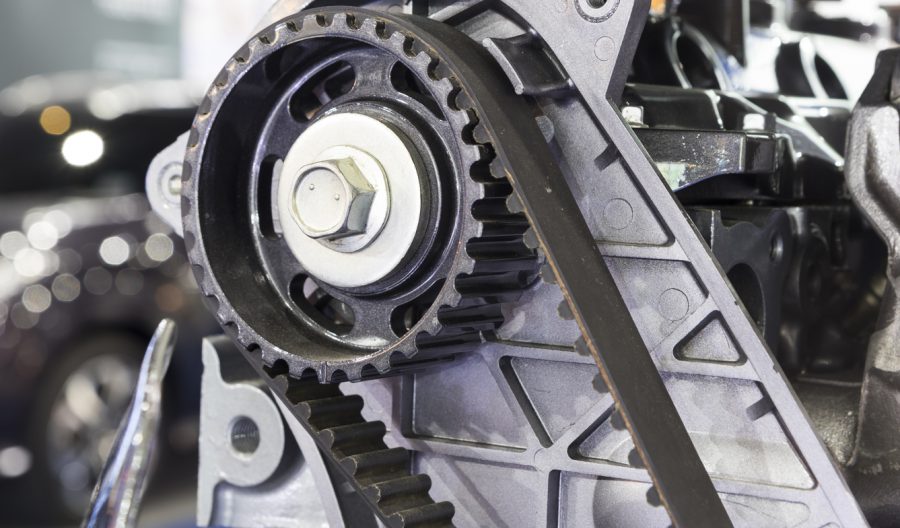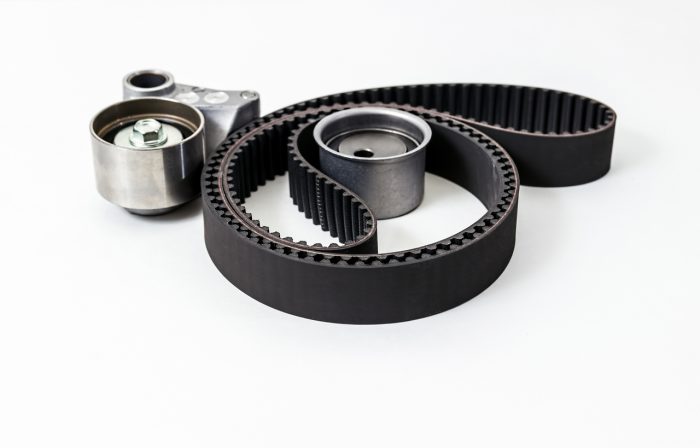
The cambelt or timing belt is an integral part of many engines. It also needs replacing on a regular – if thankfully not too frequent – basis. Read on and I’ll explain why the cambelt is so important, how you know if your car has one (not all do) and why replacing them is an absolute must-do.
Why is the timing belt so crucial?
Imagine the conductor in an orchestra for a second and you’ve pretty much got the timing belt’s job. It ensures some of the engine’s most vital moving parts operate in a perfectly synchronised sequence. If the timing belt breaks it’s like the conductor walking off: the result is anarchy and in an engine’s case, things literally grinding to a halt.
What does the timing belt do?
To understand why the timing belt is so important, it’s vital to understand how an engine works. An engine has pistons that race up and down inside cylinders. They are activated by a series of explosions in those cylinders. To supply the cylinders with fuel and air when required, valves must open at precisely the right time. To make this happen, the timing belt unites the camshaft that controls the valves with the crankshaft that is turned by the pistons.
Why it needs replacing
The timing belt or cambelt is a toothed belt made out of a mix of rubber and various other materials such as Kevlar. They’re subject to a lot of heat in the engine bay and may also have to put up with wear caused by dirt and debris. Over time, the belt can lose teeth and perhaps slip or even snap. And that can be fatal for an engine.

When to have it replaced
The manufacturer will recommend when to have a timing belt replaced. These err on the side of caution. Stick by them and you know your engine is unlikely to suffer a cambelt failure. Exceed the limits and you may be OK. But I don’t think it’s really worth taking the risk.
How expensive is replacement?
This obviously depends on the type of car. For a start, the timing belt frequently drives the water pump so while the engine is in pieces, it makes sense to fit a new water pump too. Cambelt kits often include a new water pump and the tensioner to ensure the belt works perfectly.
Unfortunately, that means it’s a pricy job. With parts, labour and VAT, you’re unlikely to get away with much under £550, even on a small car.
Buying a used car
Given that cambelt replacement is an expensive job, it’s worth finding out whether any used car you’re interested in has had the work done. If not, is it going to need the job doing within the next few months? If it will need the work doing, it’s worth factoring this into the price you’re prepared to offer the seller.
Belt or chain? What’s yours?
Depending on the kind of car you have, it will probably have either a timing belt or a chain. As the names suggest, the belt is made from rubber, the chain from metal. Timing belts need to be changed every five years or usually between 30,000 and 60,000 miles (whichever comes first). Chains last longer, needing to be changed at around 100,000 miles. Sometimes they’ll even last the lifetime of the engine.
How do you find out what you have?
Check your car’s user manual. Timing belt, camshaft belt or cambelt should be mentioned in the index and it will certainly be on the service schedule. Doing this simple piece of research will also help you to find out if your car has a belt or chain.
On modern cars, it’s usually the case that models with smaller engines have timing belts; those with larger engines have chains.

John Price is part of Green Flag’s team of automotive technical support engineers
If you check a car on carguide.co.uk it will show you when the timing belt should be replaced on a car – worth doing before you buy it!
Very informative thank you
Although my little Fiat is 5 years old, the mileage is relatively low £23K so should I change the Timing belt based on age or miles please? Patricia Lindsay
If you buy a car, even if it has a sticker with the date and miles on, it’s best to at least have a look at the condition of the timing belt. This can also be a ‘dry-run’ for the actual change in that you can check you have all the tools you need (timing belt cover access is usually limited). You do not know if the sticker is correct. You can also see if there is any fluid leaks EG: leaving the oil cap filler cap off and driving about causes a right mess.
You can ‘make it easy’ before starting out by marking (Tippex) 9 or 10 marks on the old belt AND across onto the pulleys, camshaft gear, tensioners. Do this where it comes on and off the pulley etc. Also mark and arrow to show direction of rotation just to be safe. Then when the old belt is off the car (you can triple check you have the correct new belt, then cut the old one off) tape it (side by side, not on top or underneath) to the new one and transfer the marks (Tippex) to the new belt.
Check the new belt for any arrows showing direction of rotation. Do not throw the old belt away yet. Now when you place the new belt on, just make sure the marks match up. There is no need for TDC worries or anything else and it’s much quicker. You also know for sure the new belt is exactly where the old one came off. The quickness of this renewal, means you can use the time to change the water pump, which is another topic!. Use a couple of wraps of cling film to hold the belt in place on the gear/pulley. It is clingy enough to work and if you forget to take it off, the engine will just rip it off. Also watch out for plastic not metal camshaft gear. Best not to spray anything on them, just a washed microfibre cloth with nothing on. Keep all antifreeze coolant away from the new belt if you are doing the waterpump.
5 years or 30,000 miles, whichever comes first is in the middle range but check your drivers handbook or service manual.
I had the engine replaced under warranty of my 66 plate Ford Focus at 37,000 miles it is just approaching 100,000 miles and due for service. my question is would the timing belt have been replaced with the engine? and/or will it still need done on next service? Thanks
You need a good belt.